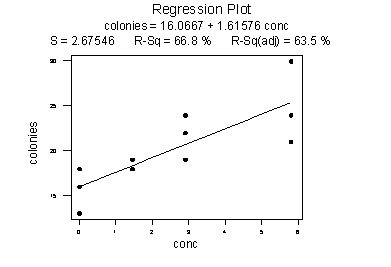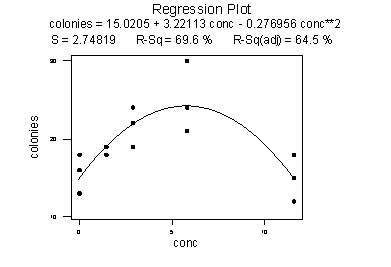12.8 - Extrapolation
12.8 - Extrapolation"Extrapolation" beyond the "scope of the model" occurs when one uses an estimated regression equation to estimate a mean \(\mu_{Y}\) or to predict a new response \(y_{new}\) for x values not in the range of the sample data used to determine the estimated regression equation. In general, it is dangerous to extrapolate beyond the scope of the model. The following example illustrates why this is not a good thing to do.
Researchers measured the number of colonies of grown bacteria for various concentrations of urine (ml/plate). The scope of the model — that is, the range of the x values — was 0 to 5.80 ml/plate. The researchers obtained the following estimated regression equation:

Using the estimated regression equation, the researchers predicted the number of colonies at 11.60 ml/plate to be 16.0667 + 1.61576(11.60) or 34.8 colonies. But when the researchers conducted the experiment at 11.60 ml/plate, they observed that the number of colonies decreased dramatically to about 15.1 ml/plate:

The moral of the story is that the trend in the data as summarized by the estimated regression equation does not necessarily hold outside the scope of the model.